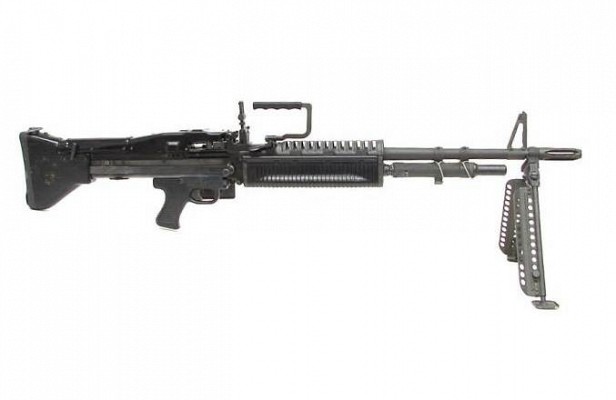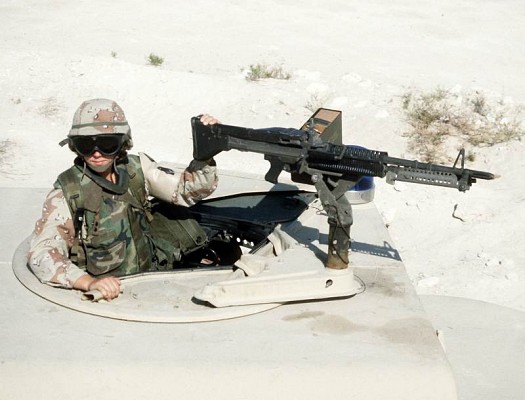M60
Overview

M60
Right side view of soldier with M60 fitted onto a tripod.
Source: US DOD (unknown photographer) -
© public domain
United States - U.S. Ordnance
South Korea
Produced under license since 1974.
Taiwan
T57 (Taiwanese service)
Description
Introduction
The M60 is an early Cold War era machine gun of US origin. It was designed after World War 2 to replace the BAR and M1919. The design is based on the Nazi German FG-42 and MG42 machine guns, although it has very different characteristics than both weapons. Due to its widespread use during the Vietnam war the M60 has become an iconic firearm.
Design
The M60 is a belt fed gas operated weapon that fires from the open bolt position. The gas tube is located below the barrel and the flow of gas cannot be adjusted. The belt cover hinged forward for reloading and the belt is fed from left to right. The M60 features a quick change barrel with a bipod that is placed very far forward. Iron sights are fitted, including a ladder type rear sight. The M60 can be mounted onto a light tripod.
Firepower
The M60 fires the 7.62x51mm NATO round from 50, 100 and 200 round disintegrating link belts. With a rate of fire of only 500 to 650 rpm the M60 is very controllable despite its limited weight. The maximum range is quoted as 1.1 km. The location of the bipod aids accuracy but makes it more difficult to transition to a different target.
Users
The M60 was extensively used by US forces in the early Cold War era, most notably during the Vietnam war. It has been exported to various US allies. Use with other NATO nations was limited due to the availability of the more rugged but heavier Belgian MAG. In US service the M60 was replaced by the M240 (MAG). Quantities of the more modern M60-E3 and M60-E4 have been acquired as well. The M60 remains in widespread use today, mainly in Asia and South America.
Variants

M60
Right side view of M60.
Source: www.world.guns.ru -
© copyright lies with original owner
Variants of the original M60
Details
Media
Related articles

M60-E3
The M60-E3 is a further development of the M60 that is even lighter. It is also better suited for use by a single person.















